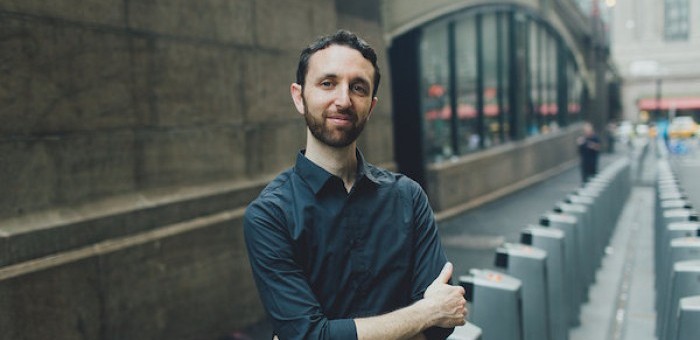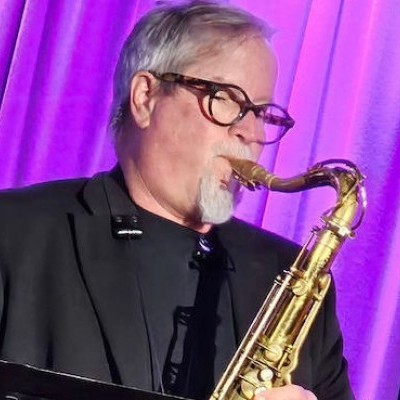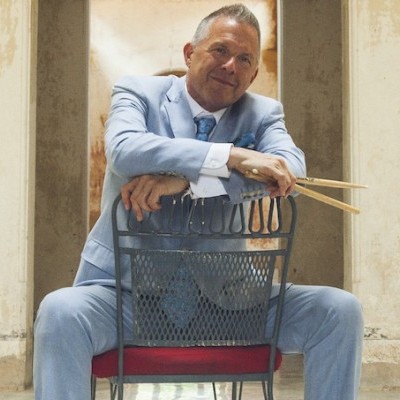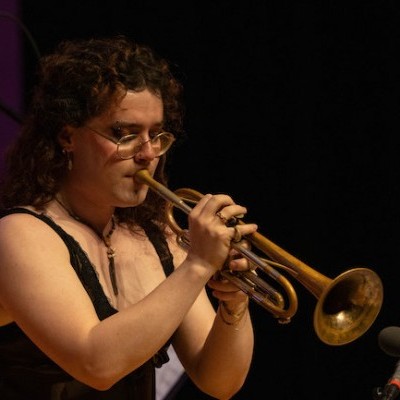Oct 28, 2025 10:47 AM
In Memoriam: Jack DeJohnette, 1942–2025
Jack DeJohnette, a bold and resourceful drummer and NEA Jazz Master who forged a unique vocabulary on the kit over his…

Danny Green, a pianist with a firm grasp on modern pastel lyricism, performed with a trio at the Blue Whale in Los Angeles on June 30.
(Photo: Courtesy of the artist)Double bills haven’t been part of the Los Angeles jazz landscape for long. The complimentary booking of pianists Danny Green and Josh Nelson and their bands may not have been sufficient to draw comparison to the era when Billie Holiday and her trio alternated sets with the Red Norvo Band at Billy Berg’s, but it was certainly an inspired pairing. The Blue Whale, a couple of blocks away from where Charlie Parker made his last stand before his six months in Camarillo, is presently the town’s finest showcase for cutting-edge music.
The two thirty-ish pianists are both lyrical players with a fair amount of classical study under their fingers. It’s easy to say they’re progeny of Bill Evans, who introduced the harmonic language of Impressionist composers like Ravel and Debussy to the jazz vocabulary, but that characterization is too simplistic.
True, Green and Nelson have a grasp on modern pastel lyricism. But listen closely and you’ll hear awareness of a number of other piano innovators (and classical composers). Of course, Herbie Hancock hovers over both pianists like the patron saint of creative strategies and happy accidents.
Green, bassist Justin Grinnell and drummer Julien Cantelm gave a very fine accounting of the working trio format. They’re up from San Diego to promote Green’s current Altered Narratives album (OA2). Three cuts on the CD are augmented by a string quartet, and it doesn’t take much to imagine Green’s compositions fleshed out by larger ensembles.
His pieces often flow, and there can be a natural, unforced quality to Green’s writing. At the Blue Whale, “Friday At The Thursday Club” had a stately melancholy in its theme, and the tune was a good place to savor Green’s beautiful touch on the keyboard.
As the trio boosted the intensity of the tune, the lines became circular, in part from the long bass tones. The tango-like “Porcupine Dreams” conjured the string backgrounds as its tempo and dynamic swelled and subsided.
If “Thursday” was circular, “Katabasis” was a whirlpool, albeit one with funk-filled shifts of rhythm. Grinnell switched to a five-string electric bass for this one, and Cantelm’s sticks danced on his trap set. He was a resourceful drummer who knew all the sweet spots on his kit. Best of all, he dealt them out judiciously over the course of the set.
“Second Chance” began life as a classical piece. It changed identity midway so that the stiff-upper-lip theme morphed into one of wistful longing. The orchestral color was left to the mind’s ear, a delicious little exercise.
A fractured solo piano introduction tgrew the listener’s ear for a minute before the contours of the imperishable “All The Things You Are” emerged. Better pianists than Green have tried to disguise that tiger’s stripes and haven’t been able to do it. Taken as a rolling shuffle, Grinnell proved he could tell a complete story in one chorus, this time on the double bass.
“Down And Out,” a new Green composition, touched on the blues, and revealed the pianist to be closer to Wynton Kelly than Otis Spann. On the compellingly rhythmic “The Merge,” Green leavened his sparkling lyricism with a little aggression that would have turned up the corners of Red Garland’s mouth.
Nelson fielded a quartet of alto saxophonist Josh Johnson, bassist Anna Butters and drummer Christian Newman. The room was the site of a couple of yearly gigs that Nelson turned into multi-media shows—with dramatic lighting, slide projectors and screens, multiple keyboards, dancers and the like. But this night it was strictly music.
Their opener, “The Architect,” had a floating, indiscernible time quality, as Johnson’s vibratoless alto skipped, hopped and made blues allusions over the theme. The ensemble fulminated to a high pitch before dropping dramatically down to a teacup-dynamic ending. “Old Friend/Bhutto Song” was a kind of peristaltic lope, played with an appreciable regard for space by all.
Nelson introduced the newly written “Orlando” for the recent Florida atrocity. It was a reflective waltz, and as Johnson ruminated in the lower register, the piano brushed in the background with full, color-laden chords.
While Butters doesn’t display the La Faro-like facility that Grinnell occasionally dips into, her solo never wasted a note. Neither did Newman throw anything away. He somehow had the simultaneous air of carefree abandon and careful deliberation. His loose, understated swing was so contained that when he gave a bash to a cymbal, it was almost shocking.
Johnson contributed the one non-Nelson tune to the set, his “Jeanine.” It was a feature for his angular alto phrasing, but the three-way rhythm section conversation going on behind him was a marvelous study in musical exchange. It was telling that Nelson gave the same degree of concentration to Johnson’s piece as he does his own.
Hancock’s “Oliloqui Valley” had Butters playing particularly strong lines as she locked in with Newman’s percussive drive. After Nelson gave an object lesson in using space to shape his horn-like phrases, a peppery drum chorus exploded before the tune touched down with a whisper. It was quite a way to end a night of exhilarating music.

Jack DeJohnette boasted a musical resume that was as long as it was fearsome.
Oct 28, 2025 10:47 AM
Jack DeJohnette, a bold and resourceful drummer and NEA Jazz Master who forged a unique vocabulary on the kit over his…

“I’ve told students, ‘I don’t mind if you use AI for this or that project,’” says MIT’s Pascal Le Boeuf. “‘But you need to tell me.’”
Sep 18, 2025 11:14 AM
A standard joke when it comes to discussing artificial intelligence, or AI, is that it’s developing so rapidly that…

Chuck Manning Works for NASA … and plays jazz.
Sep 18, 2025 11:23 AM
Congratulations! After years of study, you’ve earned your degree in jazz performance. But let’s face it: Making a…

Always a sharp dresser, Farnsworth wears a pocket square given to him by trumpeter Art Farmer. “You need to look good if you want to hang around me,” Farmer told him.
Sep 23, 2025 11:12 AM
When he was 12 years old, the hard-swinging veteran drummer Joe Farnsworth had a fateful encounter with his idol Max…

“Make time and energy to meet people and make friends,” suggests Millie Ahearn, a student at DePaul University.
Sep 18, 2025 11:32 AM
For many students, the transition into a collegiate jazz program can feel overwhelming — new peers, unfamiliar…